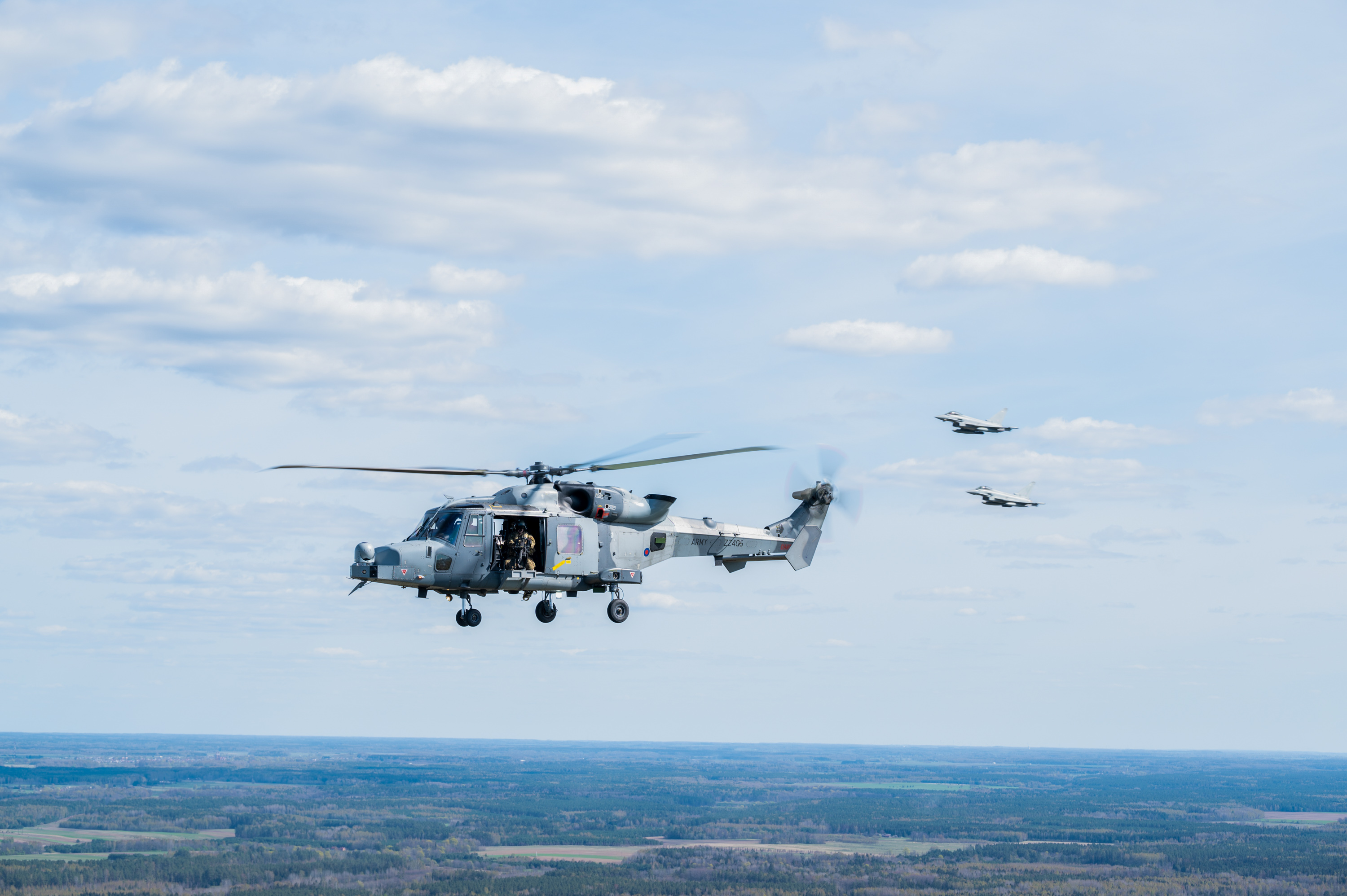
Two Royal Air Force Typhoons from RAF Lossiemouth has conducted air combat training with British Army Wildcat helicopters in Lithuania, where they have been operating as part of the wider NATO mission.
The Typhoons transited from their home base to conduct a series of simulated attacks on the helicopters in the role of a hostile aircraft. This allowed the pilot to practice attacks against low and slow flying targets, whilst giving the British Army pilots invaluable training in how to evade an attack from a fighter jet.
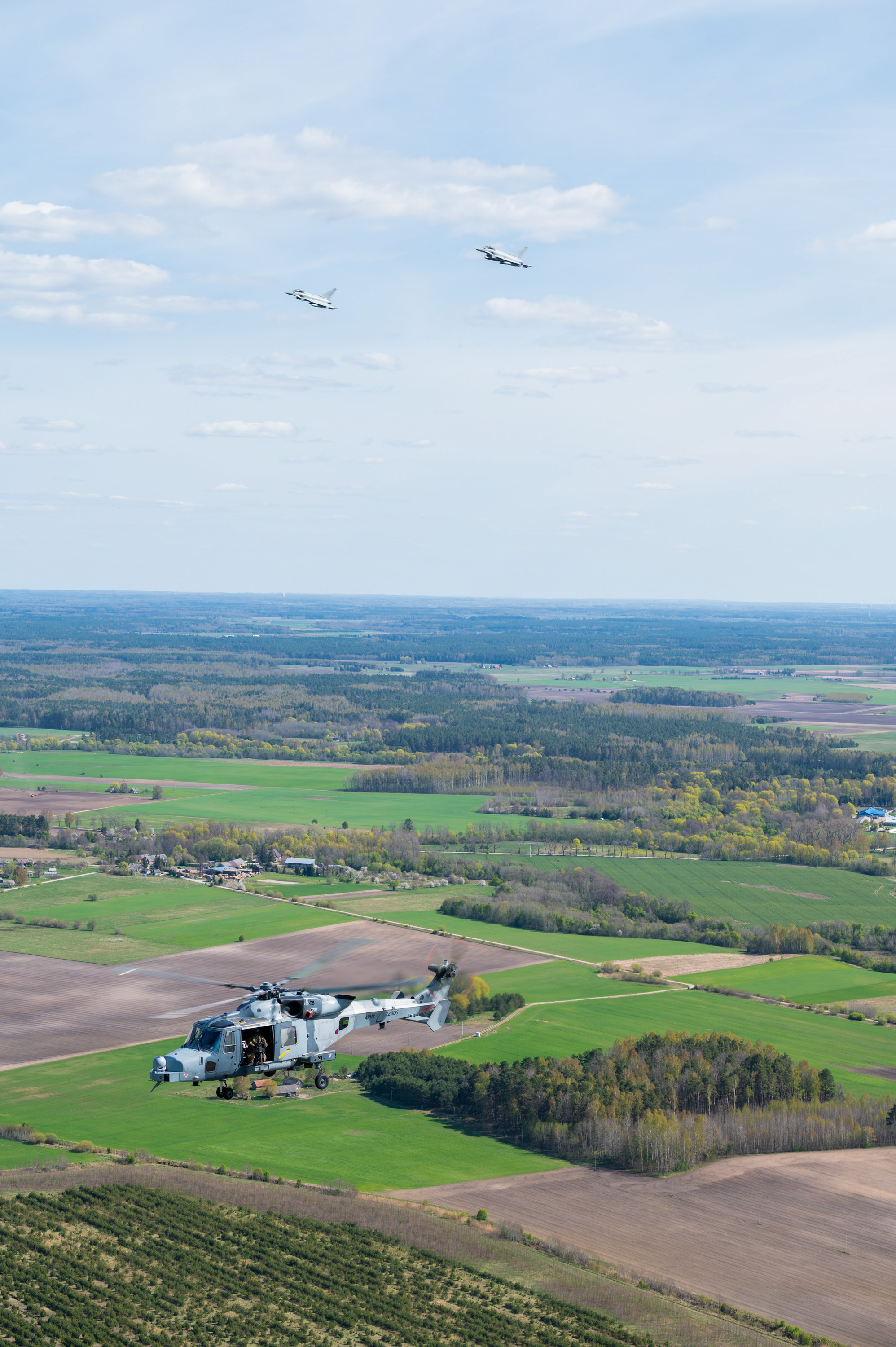
The Typhoons approached the training area from beyond the visual range of the Wildcat helicopter which was operating at low altitude. Their aim was to locate and target the helicopters by using the aircraft’s advanced radar and weapons suite with a variety of different flying techniques.
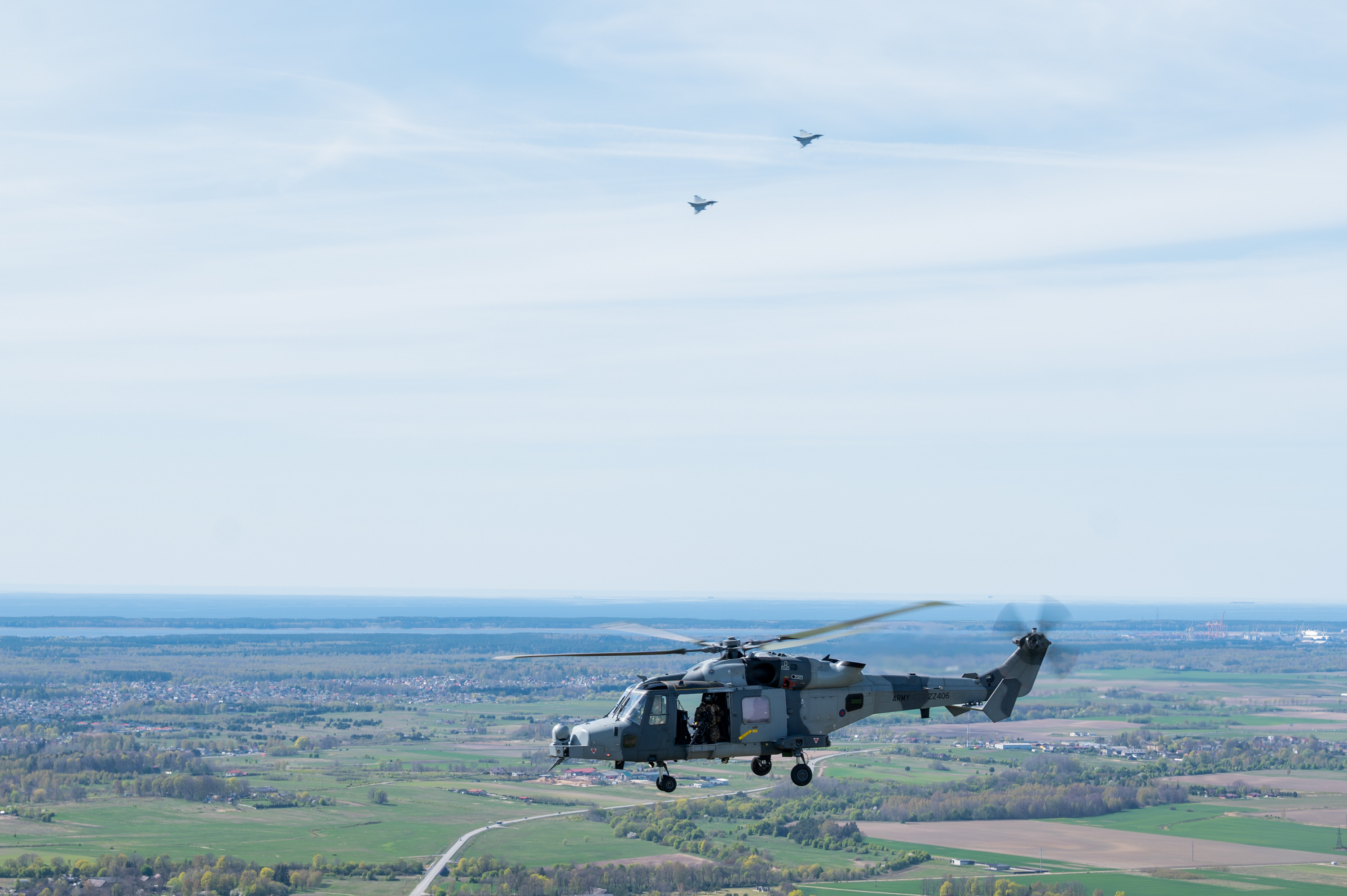
This activity allowed the aircrew to practice the full extent of aircraft capabilities in a competitive environment. The length of the exercise was extended by the support of a Voyager air-to-air-refuelling aircraft.
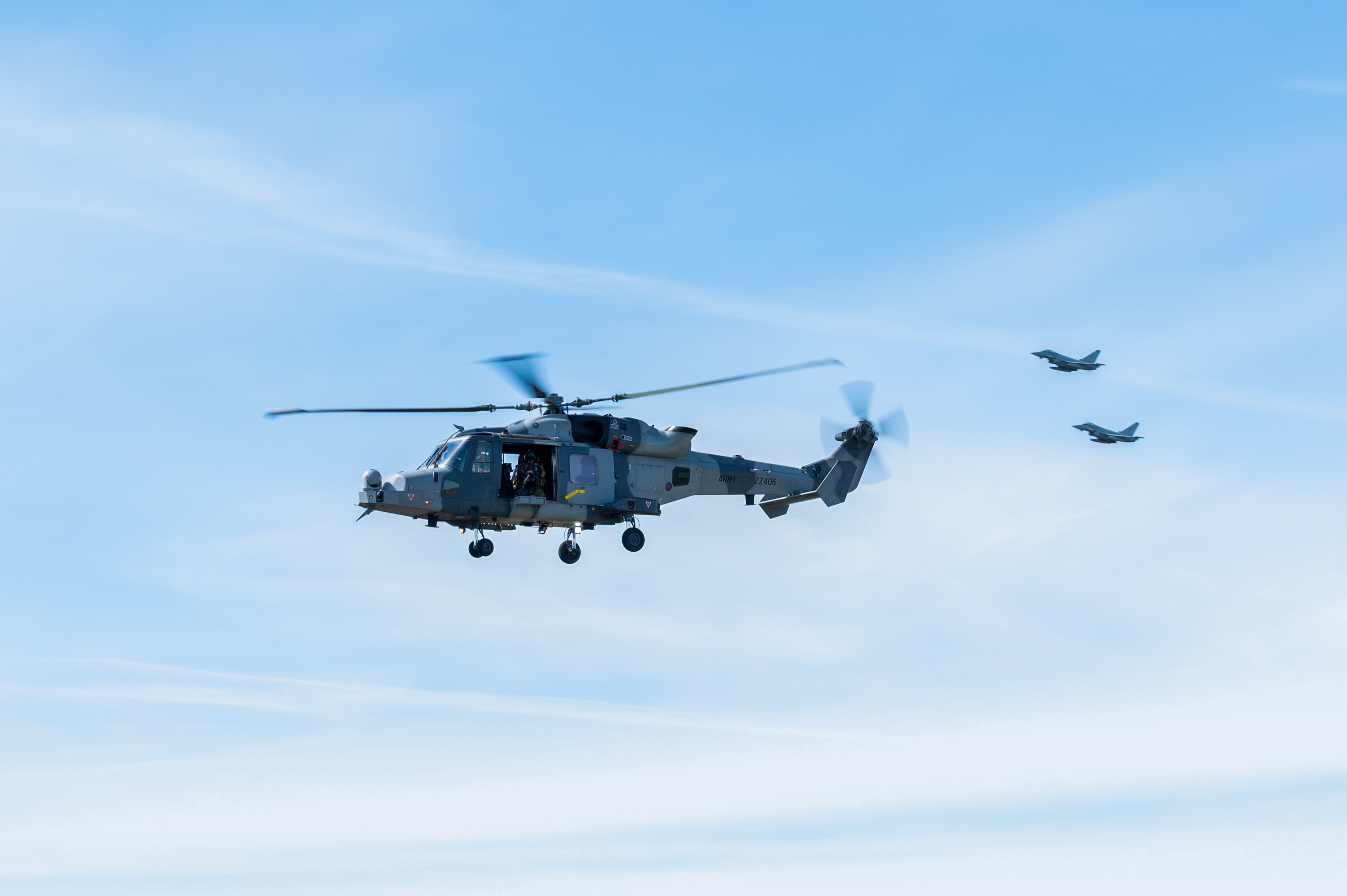
The Wildcat crews used their early warning systems, defensive aids, a variety of flying manoeuvres and predictions of the Typhoon’s actions to evade its weaponry; hugging the ground and reducing the engagement window maximises the helicopters chances of survival.
"This was intense training and one of the most exciting tasks we conduct. It helped hone our skills in what would be a life and death scenario. Effective teamwork and brevity in communications are critical to success. One poorly delivered message could make all the difference."
Wildcat Tactics Instructor
The simulated attacks were coordinated by the Lithuanian Control and Reporting Centre who coordinate operational flights in their airspace. This meant the British aviators were operating in an unfamiliar location adding to the complexity of the task and gave the opportunity to practice operating with NATO partners.
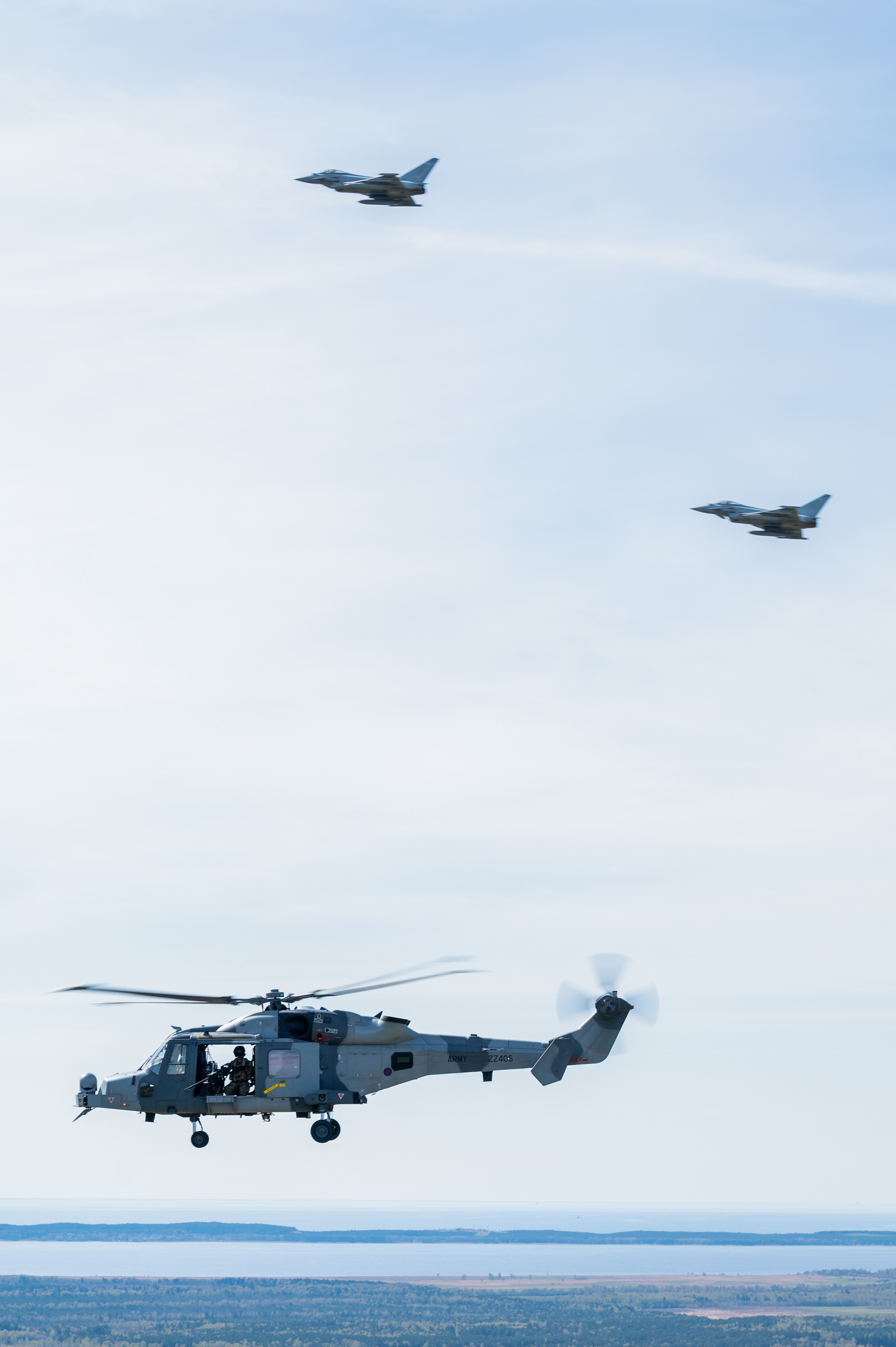
Later, the aircraft also practiced operating together, working as a team to designate and share targets, allowing engagements to take place. This demonstrates the close cooperation between the two services.
At the conclusion of the exercise the Typhoon returned to RAF Lossiemouth, while the Army helicopters continue their deployment in Lithuania in support of NATO.




